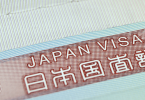People travel to New York for many reasons, and one of them is to take cooking or food-related classes. If you have not taken a course at the Natural Gourmet Institute for Food and Health, quickly amend the error! Housed on the upper floors of a non-descript building on Manhattan’s west side, this small but powerful center for culinary development is definitely a hidden treasure.
The school was started 36 years ago by Dr. Annemarie Colbin who has devoted her career to educating chefs, cooks, foodies, and health professionals about the relationship between food and wellbeing. The institute is the oldest natural foods cooking school in the US and the only one licensed by the New York State Education Department and accredited to offer a career Chef’s Training Program in natural foods cooking.
So Many Choices. So Little Time
Let us first establish that I do not cook, and I need a GPS system to locate my kitchen. Nonetheless, I am intrigued by chefs, kitchen equipment, and appliances. I find that cooking/kitchen classes are always interesting, and I like to learn – especially when the end of the session ends with food.
I discussed the dozens of available courses with the Institute’s Program Director, Judith Friedman, and she suggested I take the 4-hour class in knives. Certainly this was a joke. While I am NOT a cook, I certainly know what a knife is and how to use it. What could I possibly need to know that would take up almost 4 hours of my precious time?
Truth Be Told
She was right, and I was dumb. Not only did I know almost nothing about knives and how to use them, the 4 hours went so quickly that the class was over before I noticed the time.
In the Knife Skills class I quickly learned that:
– Mastering knife techniques could cut meal preparation in half (yes! Even less time in the kitchen!).
– Learning how to mince, dice, slice, and shred are the building blocks to a career as a chef (not my objective – but you never know).
– That all knives are not created equal; there is a special technique for selecting and caring for them, as well as methods for sharpening and honing (maybe best to get a new one).
MeMe. Preparing for the Class.
Since I am so inept in a kitchen, I thought I could make up for the deficiency (and not embarrass myself in front of the chef); I thought I would come equipped with knife knowledge. I decided to follow the old adage, “If you cannot dazzle them with brilliance, baffle them with BS).”
Knife Notes
In the beginning there were knives, but no fire. Hunters and gathers used bones and stones for cutting and shaving. The knife as we know it today was not crafted until the Bronze and Iron Age (1000 BC) … it took craftsmen this long to find the way to soften and form metal. Finally, bones were out – and the metal knife was in. The folding knife was developed by the Greeks and Romans, and their knives of choice for cutting/eating fruit were knives with ivory blades (no metal residue in the mouth).
During the Crusades (11th–13th century) and the Middle Ages (5th-15th century), people used 2 knives, one to cut food and the other to spear and eat it. The functionality of the knife expanded during this period, and now it was also used as a weapon. Although the knife remained on the table – the utensil was so expensive that European hosts requested that guests bring their own knives – if they wanted to eat.
Shaped and Sharpened
The knives of the period were narrow with sharp pointed ends. This practical utensil seemed to work until the 17th century when King Louis XIV of France decreed that all pointed knives (weapons and cutlery) to be illegal. From this point on, all knife points were blunted. His reasoning: a rounded point would end the violent use of the knife. Stylists rushed in to make design changes and knives became wider with rounded blades so that food falling off the tines of a fork could be captured on the knife blade.
The Chef and His Knives
Now that I knew about the history of the knife, I was better prepared to enter the Knife Skills class arranged by Elliott Prag. When the students entered the classroom, Prag was surrounded by Institute students and lots of pots, pans, and knives.
Although I not thought about it before, a chef with a barren kitchen cannot cook and is helpless. The knife is the most basic of chef tools. It is my understanding that most chefs prefer their own knives. They understand how their knives operate – each one has a different balance. Even when chefs chat among themselves, they will review the relative merit of their knives, analyzing whether stainless steel is better than carbon, if it matters if they are stained, and if balance is more important than metal quality. Chefs are so attached to their knives that they will oil and sharpen their knives, frequently treating them better than their significant other.
There may be relatively little difference between types of knives, the quality of the knife, but the chef’s ability to use it typifies and defines the chef’s status. Fights can erupt if one chef borrows the knife of another, without permission. The emphasis on the quality of equipment reflects a seriously-defined hierarchy. The only people who do not have their own knives in most commercial kitchens are the food preparers and the students.
Chef Prag
I was fortunate to have taken the Knife Skills class with Elliott Prag, a full-time instructor with the Natural Gourmet Institute. In addition to being a patient and well-informed teacher, Prag’s career includes that of restaurant chef, caterer, and recipe developer for Vegetarian Times. He has also been a personal chef for NYC clients. Currently he is the Manager of Social Media for NGI and writes for the blog, Blanched and Shocked, as well as Twitter and Facebook pages.
Prag did not start on his career path with the objective of becoming a chef. He holds a Bachelor’s Degree from Wayne State University in Detroit, Michigan, and was a management consultant. It was not until 1995, when he graduated from the Natural Gourmet Institute, that he found a career that interested him.
Knife Wisdom
Although I learned how to stand, hold the knife correctly, and cut vegetables without destroying them, I also found out that I should not begin to prepare a meal without a few essentials including a sturdy cutting board, a (sharp!) chef’s knife, and a (sharp) paring knife. Recommendations for the proper attire include an apron and kitchen towel (color matching and design are unimportant).
I also learned the correct way of holding a chef’s knife: grasp the blade between the pad of the thumb and the knuckle of the index finger (just in front of the bolster) and curling the remaining fingers around the bottom of the handle. If I do it correctly, I can look forward to developing a callous at the base of my index finger, near the palm. It is also important for me to keep my thumb of the “guide hand” tucked behind curled finger if I want to keep all my fingers throughout the prepping stage. The procedure also allows the knuckles of this hand to guide the edge of the knife to the right position for the next cut.
Perhaps most importantly, I learned knife safety:
– Cut away from the body (you would not believe how difficult this is – since my mother told me just the opposite).
– Always use a cutting board; do not cut anything in your hand.
– Hold items being cut firmly with one hand. Tuck fingers in/curl them under, so fingers are not sticking out when the blade comes down.
– Drop a knife? Do not try to catch it.
– Don’t run with a knife in your hand. This should probably include: don’t use your cell phone with a knife in your hand, and don’t do the laundry with a knife in your hand, and definitely do not take a shower with a knife in-hand.
– Don’t throw a knife at someone (unless you are in the entertainment business or a criminal). Someone needs a knife? Hand it to them with the handle first.
– Never point a knife at someone (unless you plan to use it “off-label”).
– Don’t use knives as a screw driver, a paper cutter, an envelope opener, or to open jars and draws.
– Use knives in a well-lit area so that you can see what you are doing.
– Do not use knives on live electrical items or stick them in electrical sockets.
– Keep knives clean, lubricated, and sharp (safer than dull).
– If you get cut, seek first aid immediately.
– Wash knives immediately after use. Leaving knives in a sink of soapy water where they cannot be seen can be dangerous.
You Should Go
Taking Prag’s class in knives is highly recommended. I also think that rather than try to do all the slicing and dicing myself (and making a mess of the green pepper), it might be easier to have Prag orchestrate my next dinner party. I definitely think that it is appropriate to let the experts do what they do best, and leave me to do what I do best, eating and drinking.
For additional information, contact the NGI www.naturalgourmetinstitute.com .






















